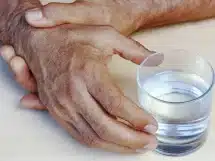The national capital, which confronted the novel coronavirus 30 days after the first case was reported in India, currently accounts for the highest infection rate per million in the country.
On March 2, 2020, Delhi became the second state in the country to report a case of COVID-19. A 45-year old man, who had returned from Italy, tested positive. By the end of the month, more than 100 people had been infected, and 10 days later, the number reached 1000.
HealthLEADS looks at the data to understand the surge in cases of COVID-19 in Delhi.
Outbreak in Delhi
As of April 29, 2020, Delhi had reported a total of 3,439 cases of COVID-19. India’s worst-hit state Maharashtra has 9,318 cases, more than double that of Delhi. However, the infection rate in Delhi is massive. The national capital has seen more than 176 people infected, per million of the population, while Maharashtra, which houses the country’s financial capital Mumbai, has an infection rate of just under 75.
Testing times
Tests for COVID-19 in Delhi began with only the All India Institute of Medical Sciences (AIIMS) as the designated laboratory. The testing rate, initially slow, has picked up in recent days, as the state now has 19 laboratories – eight government and 11 private.
A total of 47,225 samples have been tested by April 29. The rate has nearly doubled in the last 10 days, from 1250 per million to 2421 per million of the population. For a point of comparison, the national average testing rate is 559 per million. Aggressive testing has also translated to a second surge of cases in the last week, with many detected cases being asymptomatic.
Recovery journey
Recoveries in Delhi were initially low. Only 50 out of 1640 people had been cured and discharged from isolation units until April 16, 2020. The recovery rate has since picked up from 3.04 percent to 31.75 percent. As of April 29, 1,092 people have been cured and discharged.
With recoveries picking up, the fraction of active cases has declined in Delhi over the last two weeks, from over 95 percent to just over 66 percent. A firm recovery pace is expected to eventually plateau the curve.

















